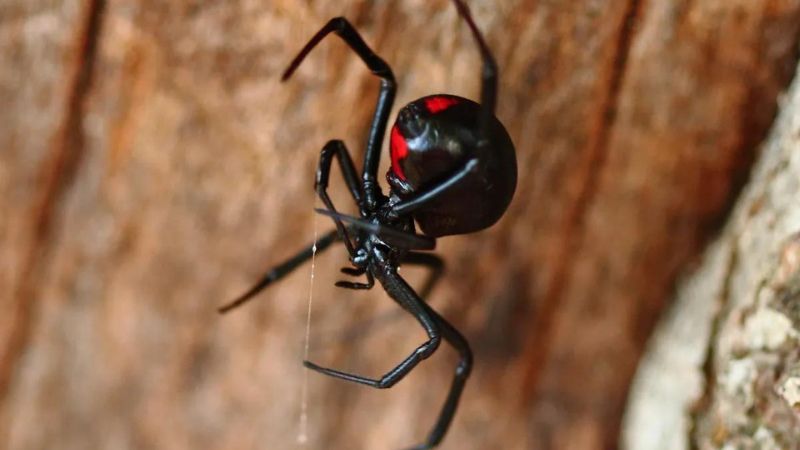Spiders, with their eight legs and often fearsome appearance, evoke a mix of fascination and fear in many people. Among the vast array of spider species, some stand out for their potent venom and potentially deadly bites. In this article, we’ll explore the eight deadliest spiders on Earth, delving into their characteristics, habitats, and the dangers they pose to humans.
Brown Recluse Spider

The Brown Recluse Spider, scientifically known as Loxosceles reclusa, is notorious for its venomous bite. Found primarily in the United States, these spiders can inflict a bite that leads to significant tissue damage. Their venom contains enzymes that destroy blood vessel walls near the bite site, often resulting in a necrotic lesion known as a cutaneous ulcer.
Brazilian Wandering Spiders
Brazilian Wandering Spiders, belonging to the Phoneutria genus, are renowned for their aggressive behavior and potent neurotoxic venom. When threatened, they raise their front legs in a defensive posture, warning potential predators or perceived threats. Their venom can cause severe neurological symptoms in humans, including muscle spasms, paralysis, and respiratory distress.
Yellow Sac Spider
Yellow Sac Spiders, members of the Clubionidae family, are known for their habit of creating silken tubes in various habitats, including under stones, leaves, and grass. While their venom is not as potent as that of some other deadly spiders, they can still inflict painful bites. Symptoms may include localized pain, swelling, and redness at the bite site.
Wolf Spider
Wolf Spiders, belonging to the Lycosidae family, are agile hunters known for their wolf-like hunting behavior. Unlike many other spiders that use webs to catch prey, wolf spiders actively chase and pounce on their victims. While their venom is not typically dangerous to humans, their large size and intimidating appearance can trigger fear and anxiety.
Black Widow Spider

The Black Widow Spider, scientifically known as Latrodectus, is infamous for its potent venom and distinctive black coloration with a red hourglass marking on its abdomen. Found across the Americas, including the United States, Canada, Latin America, and the West Indies, black widow spiders can cause severe symptoms in humans, including muscle cramps, nausea, and respiratory distress.
Brown Widow Spider
The Brown Widow Spider is closely related to the black widow and shares many similar characteristics. While originally from South America, it has become an invasive species in other parts of the world, including North America. Like its cousin, the brown widow’s venom can cause significant discomfort and medical complications in humans.
Red Widow Spider
The Red Widow Spider stands out for its distinctive red coloration, with a crimson cephalothorax, legs, and reddish-brown to black abdomen. While less well-known than some other deadly spiders, the red widow inhabits specific regions and can pose a threat to humans with its venomous bite.
Redback Spider
The Redback Spider, scientifically known as Latrodectus hasselti, is a venomous spider native to Australia. Found throughout the country, except in the harshest deserts and coldest mountaintops, redback spiders are known for their characteristic red stripe on the upper side of the abdomen. They often build nests and webs in sheltered locations, including among grape leaves and bunches.
Common Misconceptions About Deadly Spiders
There are many myths and misconceptions surrounding deadly spiders, often fueled by sensationalized media coverage and urban legends. One common myth is that all spiders are aggressive and will attack humans unprovoked. In reality, most spiders are shy and will only bite in self-defense or if they feel threatened.
Safety Measures Around Deadly Spiders
While encounters with deadly spiders are rare, it’s essential to take precautions to minimize the risk of bites. Avoiding areas where spiders are likely to dwell, such as dark and cluttered spaces, can help reduce the likelihood of accidental encounters. Additionally, wearing protective clothing and shoes when working outdoors can provide an extra layer of defense against spider bites.
Treatment for Spider Bites
In the event of a spider bite, prompt medical attention is crucial. While most spider bites are not life-threatening, they can cause significant discomfort and medical complications if left untreated. General guidelines for treating spider bites include cleaning the wound with soap and water, applying a cold compress to reduce swelling, and seeking medical assistance if symptoms persist or worsen.
Importance of Spider Conservation

Despite their fearsome reputation, spiders play a vital role in ecosystems around the world. As predators of insects and other arthropods, they help regulate populations and maintain ecological balance. Conservation efforts aimed at protecting spider habitats and raising awareness about their importance can contribute to biodiversity preservation and ecosystem health.






